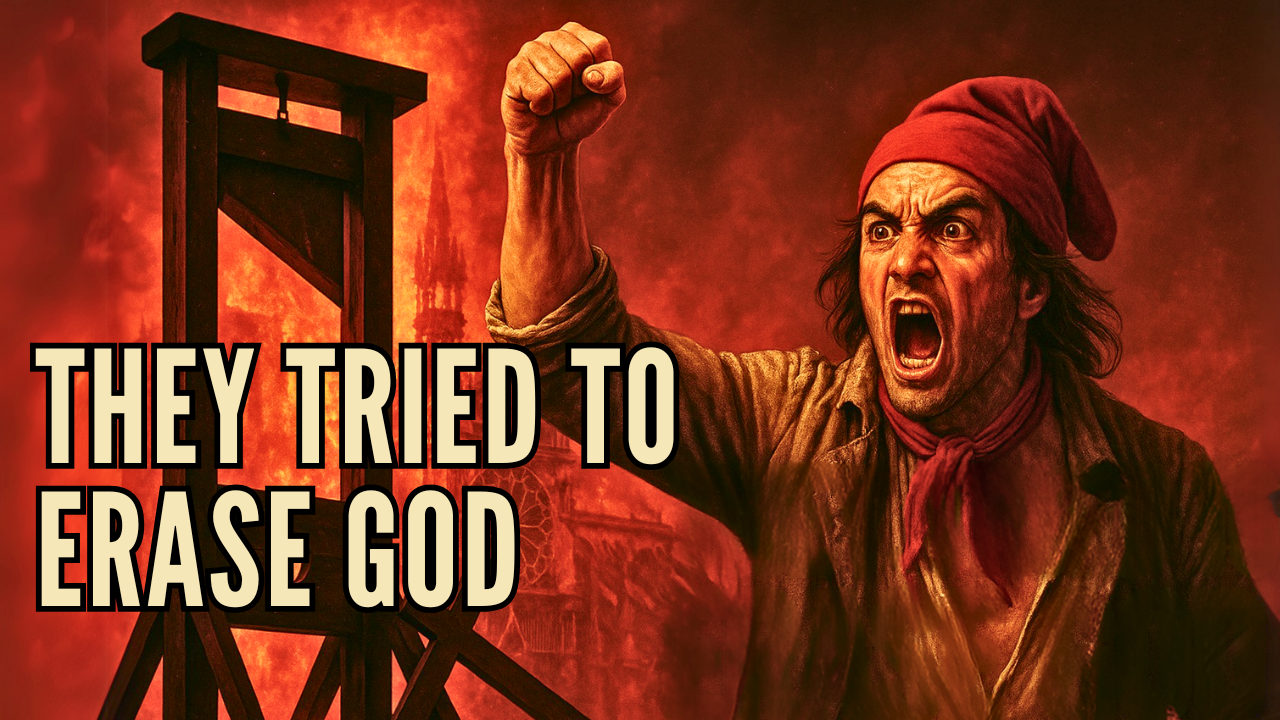Introduction: The Hidden Persecution
In seventeen eighty-nine, while the world celebrated the dawn of liberty in France, a darker story was unfolding behind the revolutionary banners3. The French Revolution wasn’t just about overthrowing kings—it was about systematically erasing fifteen centuries of Christian civilization4. This hidden persecution represents one of history’s most deliberate campaigns to destroy Gothic cathedrals, desecrate sacred tombs, and eliminate every trace of Catholic heritage from French soil5.
What began as promises of religious freedom would soon reveal a sinister agenda of spiritual warfare disguised as political revolution3. The revolutionary authorities suppressed the Church, abolished the Catholic monarchy, nationalized Church property, exiled thirty thousand priests, and killed hundreds more3. This comprehensive attack on Catholic France represents one of the most systematic persecutions in European history4.
The Promise Turned to Betrayal: Early Revolutionary Deception
The National Assembly of seventeen eighty-nine promised justice and equality for all French citizens4. Yet within months, their true intentions toward the Catholic Church became crystal clear5. The revolutionaries didn’t simply want political reform—they wanted complete religious submission through what historians now recognize as the most systematic French Revolution Catholic persecution in European history3.
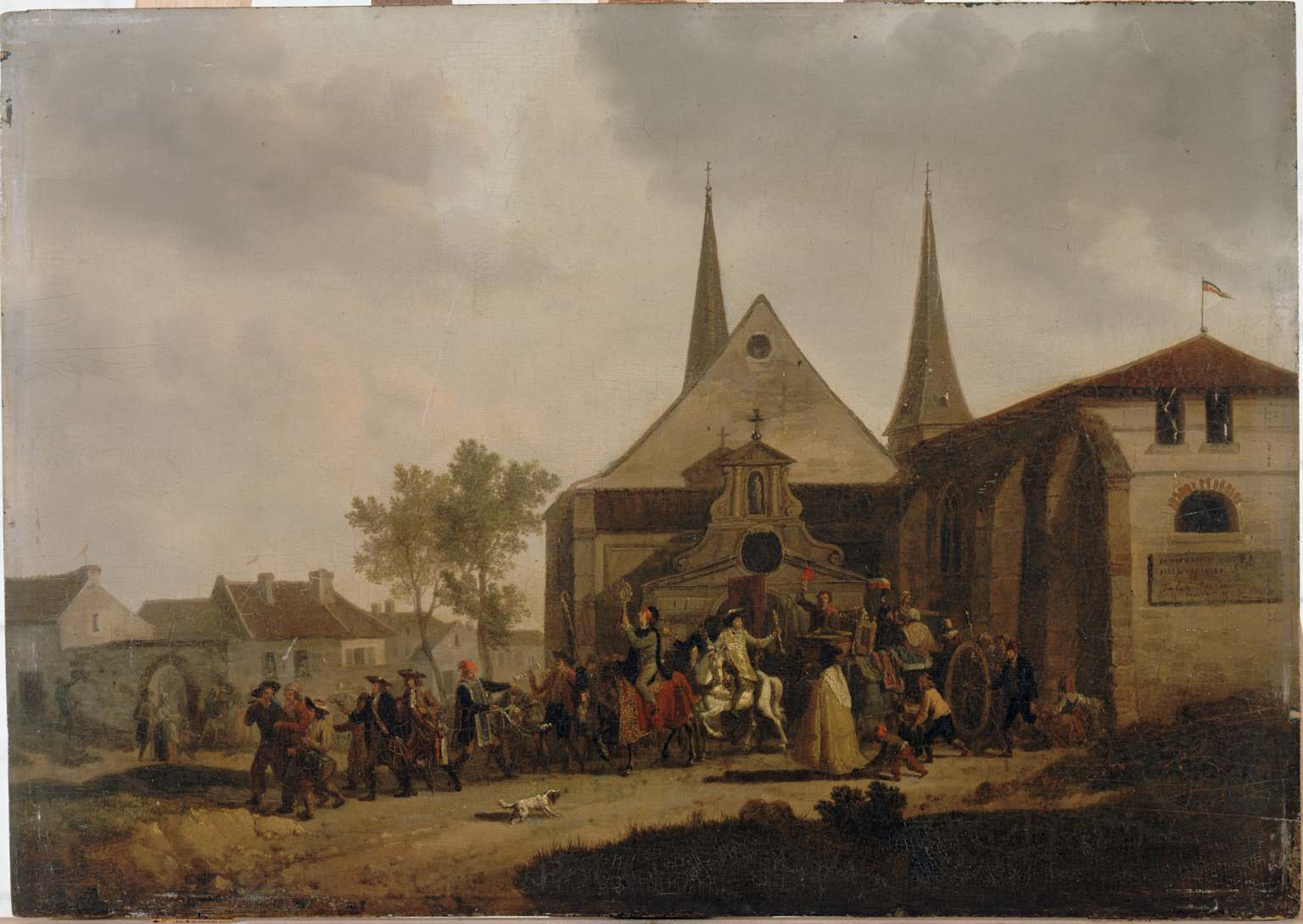
Depiction of the dechristianization of France during the French Revolutionwikipedia
The Civil Constitution of the Clergy forced priests to choose between their Pope and their homeland, while religious vows were banned entirely4. Church properties worth millions were seized overnight, transforming sacred spaces into government warehouses3. The Assembly’s moderate facade crumbled as they systematically dismantled centuries of ecclesiastical independence5. Bishops were forced to swear loyalty oaths to the state, creating a schism that would tear French Catholicism apart4.
What began as promises of religious freedom quickly revealed itself as calculated persecution5. The revolutionaries understood that to control France’s future, they had to destroy its spiritual foundation3. Every confiscated monastery, every banned religious order, every forced oath was another nail in the coffin of Catholic France4. Yet this moderate persecution was nothing compared to the radical fury that was about to be unleashed upon the faithful5.
The War Against Sacred Memory: Dechristianization Campaign
By seventeen ninety-two, the mask had completely fallen away9. Radical Jacobins launched what they proudly called “de-Christianization”—a systematic campaign to purge France of its Christian identity3. Churches became stables for revolutionary horses, while crosses were torn from public squares across the nation5. The very calendar was rewritten to eliminate Christian feast days, replacing Christmas and Easter with secular festivals honoring revolutionary ideals9.
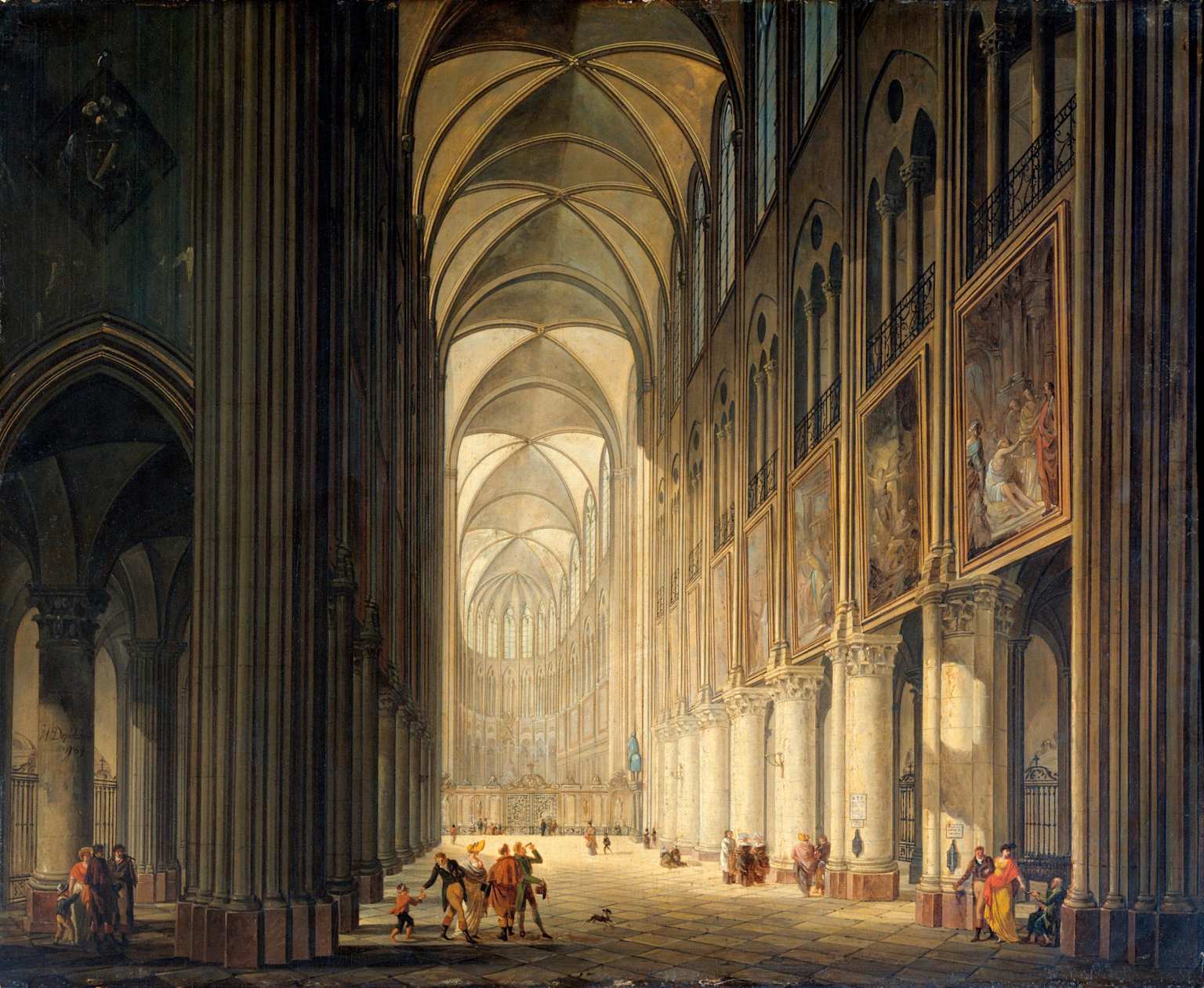
Interior view of Notre Dame Cathedral, showcasing its gothic architecturecnn
Street names bearing saints’ names were erased and replaced with revolutionary heroes throughout France3. The Festival of Reason replaced the worship of God, while actresses posed as goddesses of liberty in desecrated cathedrals9. Revolutionary committees roamed the countryside, forcing citizens to renounce their faith publicly or face the guillotine5. Even wedding ceremonies were stripped of religious content, replaced with sterile civil contracts that denied the sacred nature of marriage3.
The Jacobins didn’t just want political power—they wanted to become the new priests of a godless religion9. Every Christian symbol destroyed was replaced with revolutionary iconography, every prayer silenced was replaced with revolutionary hymns5. Cemetery inscriptions were changed to read “Death is eternal sleep,” denying the Christian hope of resurrection5. This wasn’t reform—this was cultural genocide, executed with bureaucratic precision that would make modern totalitarian regimes envious3.
Destroying Beauty in God’s Name: The Gothic Cathedral Massacre
The Gothic cathedrals represented everything the revolutionaries despised about medieval France6. These architectural masterpieces, built over centuries by countless faithful hands, were branded as symbols of superstition and ignorance7. At Notre-Dame, revolutionary mobs mistook the biblical kings of Judah for French monarchs and systematically destroyed the entire gallery, decapitating twenty-eight stone kings in the square before the cathedral7.

Ornate wood carving depicting possible vandalism on religious figuresjustmovingaround
The Cathedral of Saint Stephen in Sens watched helplessly as eleventh-century statuary was reduced to rubble by revolutionary hammers6. The magnificent Cathedral of Cambrai—one of Europe’s largest Gothic structures—was completely demolished in seventeen ninety-six, its stones sold for revolutionary construction projects6. Revolutionary committees issued official orders for the destruction, treating these sacred spaces like military targets to be conquered7.
Stained glass windows that had inspired generations of believers were shattered for sport, while flying buttresses were torn down to eliminate what revolutionaries called “monuments to fanaticism”6. During the period buildings served as barracks, stained glass windows were destroyed, and medieval paintings in choirs were painted over with revolutionary symbols6. Each fallen stone represented not just architectural loss, but the deliberate erasure of collective memory7.
For those seeking deeper spiritual connection with the saints who built these sacred spaces, our e-book “Fifty Saints: Stories and Prayers for Divine Intervention” contains the lives and prayers of the very saints whose statues were destroyed during this dark period. The revolutionaries understood that beauty itself was their enemy, because beauty points the human heart toward the divine7.
The Violation of Eternity: Desecrating the Sacred Dead
Revolutionary fury didn’t stop with the living or their buildings3. The sacred tombs of Saint-Denis, resting place of French royalty for over a thousand years, were systematically violated by official decree3. Royal remains were dumped into mass graves, while precious reliquaries containing saints’ remains were melted down for their gold and silver5. The Convention National issued specific orders for this desecration, treating the dead as enemies of the revolution3.
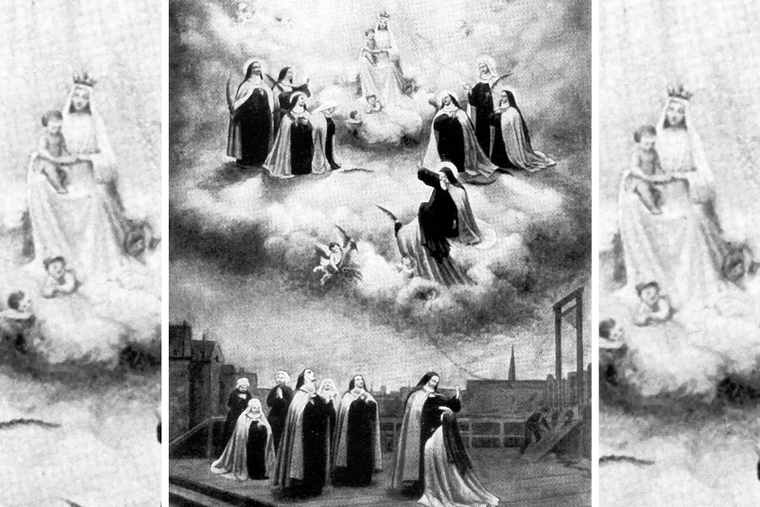
Martyrdom and heavenly ascent of Catholic nuns during the French Revolutionncregister
Ancient sarcophagi were smashed open with hammers and axes, their contents scattered to the winds5. Centuries-old burial shrouds were burned in public ceremonies, while revolutionary crowds cheered the destruction of what they called “superstitious relics”3. Even the bones of saints were ground into powder and mixed with lime, ensuring that no trace of the sacred would remain for future generations to venerate5.
The revolutionaries understood something profound: to truly kill a civilization, you must murder its memory3. They weren’t just destroying bodies—they were attempting to sever the spiritual connection between past, present, and future generations of French Catholics5. By violating the eternal rest of kings and saints, they declared war on the very concept of sacred continuity that had sustained French civilization for over a millennium3.
Faith in the Ruins: The Triumph of Catholic Resistance
Yet even in humanity’s darkest moments, divine light finds a way to shine through4. Hidden in countryside chapels and secret gatherings, French Catholics preserved their faith through the Terror’s bloodiest years5. Priests celebrated Mass in forests, while faithful families passed down prayers in whispered voices4. Underground networks of believers risked their lives to protect sacred vessels, religious art, and precious manuscripts from revolutionary destruction5.
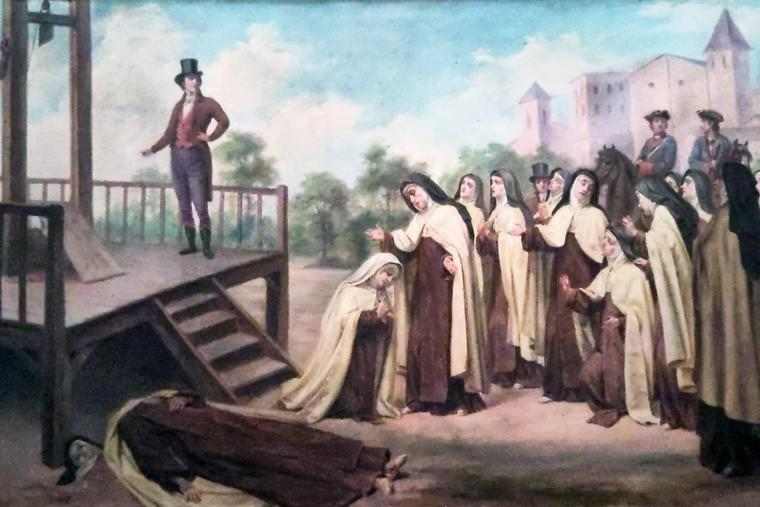
The execution of Catholic martyrs during the French Revolutionncregister
The stones of destroyed cathedrals were carefully collected by believers who dreamed of future restoration7. Peasant families buried statues of saints in their gardens, while noble women smuggled relics across borders to safety4. Even in the darkest days of the Terror, when the guillotine claimed thousands of lives, secret Masses continued in hidden locations throughout France5.
The Martyrs of Compiègne—sixteen Carmelite nuns who chose death rather than abandoning their vows—became symbols of this faithful resistance8. These courageous women sang hymns as they walked to the guillotine, their sacrifice inspiring countless Catholics to remain steadfast8. In Brittany alone, over one hundred twenty thousand Catholics were killed for religious reasons, representing fifteen percent of the region’s population4. Yet their blood became the seed of future restoration5.
When Napoleon finally ended the revolutionary chaos, these same faithful souls began the painstaking work of rebuilding what hatred had torn down7. Their perseverance reminds us that while human evil can destroy buildings, it cannot destroy the human soul’s connection to the divine5. The faith that survived the Revolution’s fury would eventually rebuild the cathedrals, restore the statues, and renew the sacred traditions that seemed lost forever7.
Conclusion: Eternal Lessons from Revolutionary Darkness
The French Revolution Catholic persecution reveals a timeless truth about the nature of spiritual warfare5. When ideologies seek to replace God with human reason, destruction inevitably follows3. The revolutionaries believed they were creating a perfect society, yet their legacy includes some of history’s most senseless cultural vandalism7. Today, as we witness similar attacks on religious heritage worldwide, the lessons from revolutionary France become more relevant than ever5.
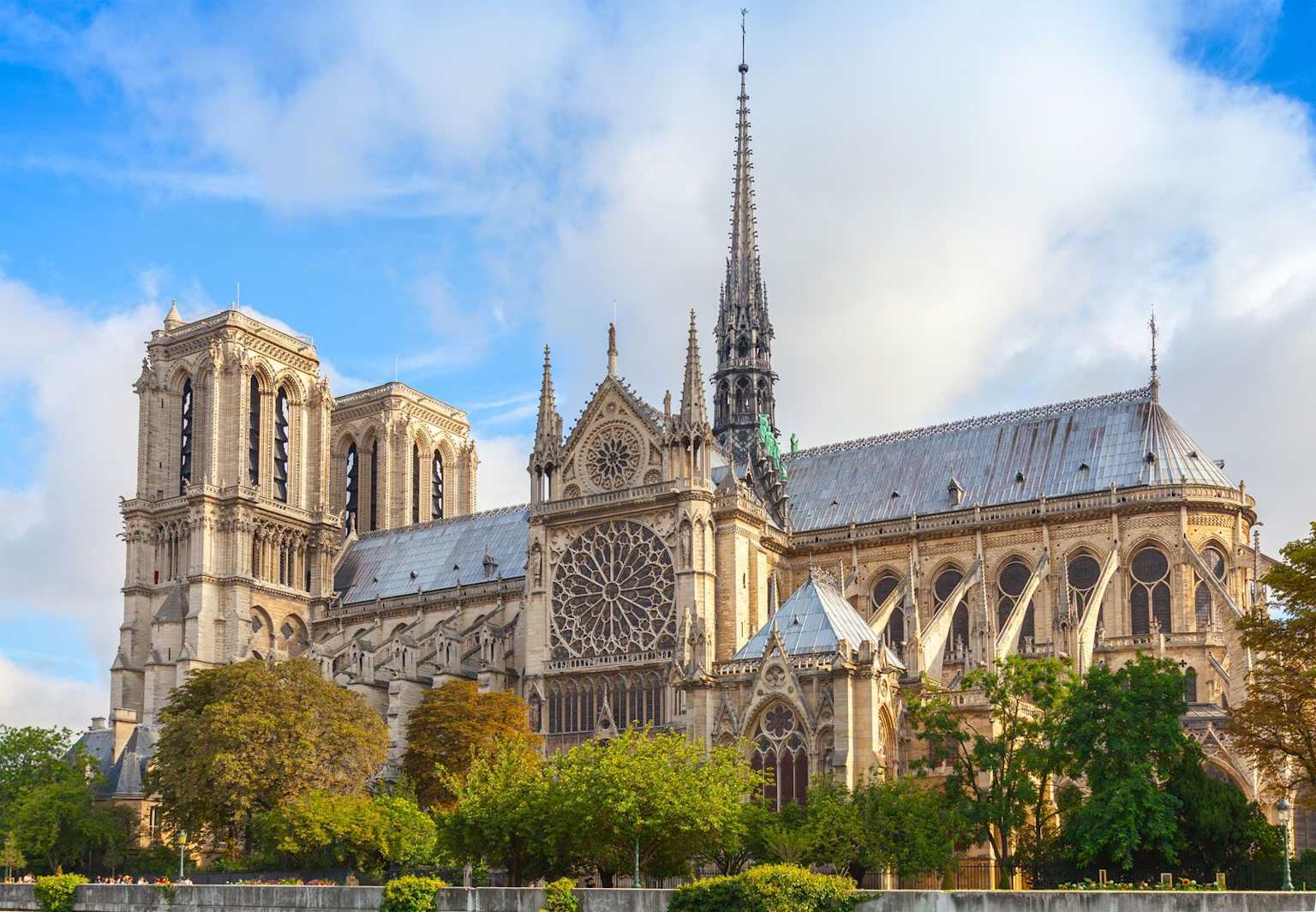
Exterior view of the Notre Dame Cathedral in Parisbritannica
The Gothic cathedrals that survived this period stand as silent witnesses to both human cruelty and divine resilience7. Every restored statue, every rebuilt altar, every prayer whispered in these sacred spaces represents victory over the forces that sought to erase them5. The revolutionaries tried to kill God in France, but faith proved stronger than guillotines4.
Related Resources and Further Reading
Digital Resources
- “Fifty Saints: Stories and Prayers for Divine Intervention” – Our comprehensive e-book featuring the lives and prayers of saints who faced persecution throughout history
- French Revolution Catholic Martyrs Database – Complete historical records of Catholics who died for their faith during the Revolution
- Gothic Cathedrals Virtual Tour – Experience the beauty that revolutionaries tried to destroy
- Dechristianization of France Historical Analysis – Comprehensive academic resource on revolutionary anti-religious campaigns
Recommended Books
- “Citizens” by Simon Schama – A comprehensive look at the French Revolution’s impact on ordinary people https://amzn.to/4krm2bW
- “The French Revolution and What Went Wrong” by Stephen Clarke – A critical examination of revolutionary failures that aligns with this article’s perspective. https://amzn.to/3FDdgIR
- “Dechristianization of France during the French Revolution” – Historical analysis of anti-religious campaigns
Catholic Historical Resources
- Catholic Encyclopedia – Authoritative source on Church history and martyrs
- Vatican Historical Archives – Official Church documentation on persecution periods
- Martyrs of Compiègne Official Beatification Records – Complete documentation of the Carmelite martyrs
If this hidden history opened your eyes to truths you’ve never heard before, please share this article with others who need to know4. Subscribe to our newsletter for more untold stories of faith under fire, and remember—the stones remember what history books forget7.
Connect with Us!
Explore more Catholic content and support our mission:

